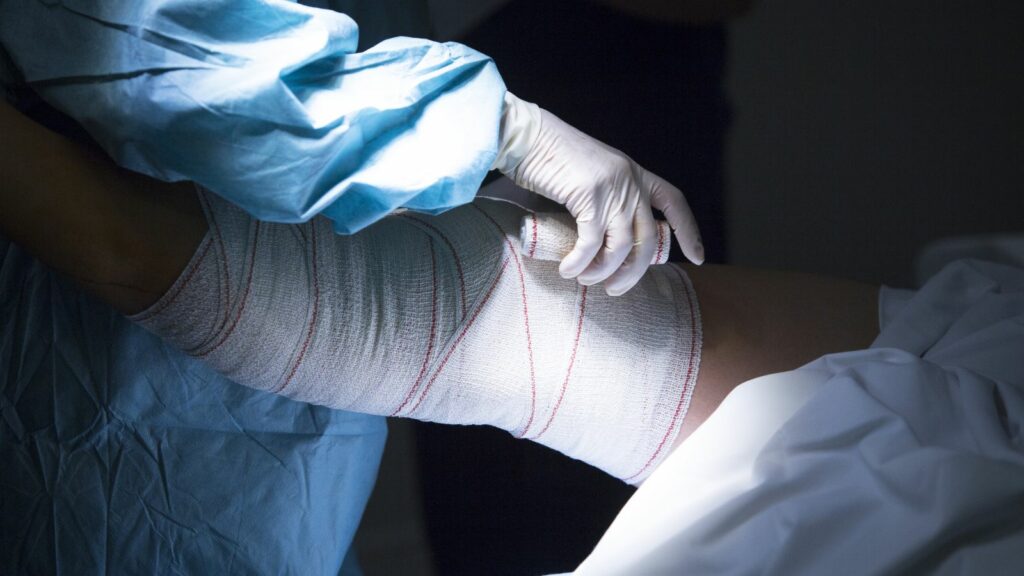In the high-stakes world of competitive sports, the role of sports medicine surgeons is pivotal. These medical professionals are the unsung heroes, working behind the scenes to ensure athletes are always at their peak performance. They’re the ones who diagnose, treat, and prevent sports-related injuries, helping athletes recover and return to the game they love.
But what exactly does a sports medicine surgeon do? How do they help athletes maintain their physical prowess? And what does it take to become one? This article delves into the exciting world of sports medicine surgery, providing valuable insights into this specialized field. So whether you’re an athlete, a sports enthusiast, or considering a career in sports medicine, stay tuned. You’re about to learn why sports medicine surgeons are integral to the world of sports.

Sports Medicine Surgeons
Sports Medicine Surgeons play an instrumental role in sports industry, by managing athletes’ health and recovery from injuries. They stand as an important bridge between sports and medicine, balancing the crucial aspects of performance and physical well-being.
Roles and Responsibilities
Sports Medicine Surgeons diagnose and treat sports-related injuries through the application of surgical, non-surgical, and rehabilitation techniques. They advise athletes on prevention strategies and perform comprehensive assessments, both pre and post injury, using modern medical tools and techniques for accurate diagnosis. This includes administering treatment options like arthroscopic surgery and physical therapy sessions.
Education and Training Requirements
In order to become a Sports Medicine Surgeon, a strong foundation in medicine is necessary. This includes a four-year undergraduate degree in a field like biology or health sciences, followed by four years of medical school. After obtaining a Doctor of Medicine (MD) degree, candidates undertake a five-year residency program in orthopedic surgery, gaining hands-on experience in diagnosing and treating musculoskeletal injuries. Specifically focusing on sports medicine, some surgeons opt for an additional one to two year fellowship program in sports medicine after the residency.

Common Injuries Treated by Sports Medicine Surgeons
As guardians of athletes’ wellbeing, sports medicine surgeons handle a range of serious injuries. Pivotal to their scope of work are joint injuries and muscle or tendon traumas.
Joint Injuries
Joint injuries strike at the heart of an athlete’s mobility. When injuries occur, sports medicine surgeons tackle a wide spectrum of joint-related conditions. Consider an anterior cruciate ligament (ACL) tear in football players, a common knee joint injury which typically necessitates surgical intervention. Or shoulder dislocations, frequently seen in sports like rugby and basketball which demand vigorous arm movements. Another instance is a tennis elbow, prevalent in racket sports players. By offering precise diagnosis followed by suitable treatments, surgeons contribute substantially to athletes’ recovery and return to play.
Muscle and Tendon Injuries
Muscle and tendon injuries form another category that sports medicine surgeons often contend with. Hamstring strains for instance, are frequent in athletes engaged in speed-intensive disciplines like sprinting or football. Groin pulls are another injury type often observed among ice hockey and soccer players. Sports medicine surgeons could also encounter Achilles tendon injuries, particularly among long-distance runners.

Advanced Techniques in Sports Medicine Surgery
As the field of sports medicine continues to evolve, advances in surgical techniques become more prevalent. These new methods enable sports medicine surgeons to provide more effective treatments with minimal invasion and shorter recovery times.
Minimally Invasive Surgery
Included among these advanced techniques is minimally invasive surgery. Removing the need for large incisions, these procedures involve the use of specialized instruments inserted through small cuts. Surgeons perform these procedures, aided by an arthroscope, a thin, flexible tube with a small video camera attached. Examples include arthroscopic procedures for the knee and shoulder, offering significant benefits when treating common injuries like ACL tears and shoulder dislocations.
Benefits of minimally invasive surgery include but aren’t limited to smaller scars, reduced pain and bleeding, lower risk of infection, faster recovery, and shorter hospital stays. Additionally, minimally invasive surgery allows athletes to return to training and competition more swiftly, speeding overall return to performance.

